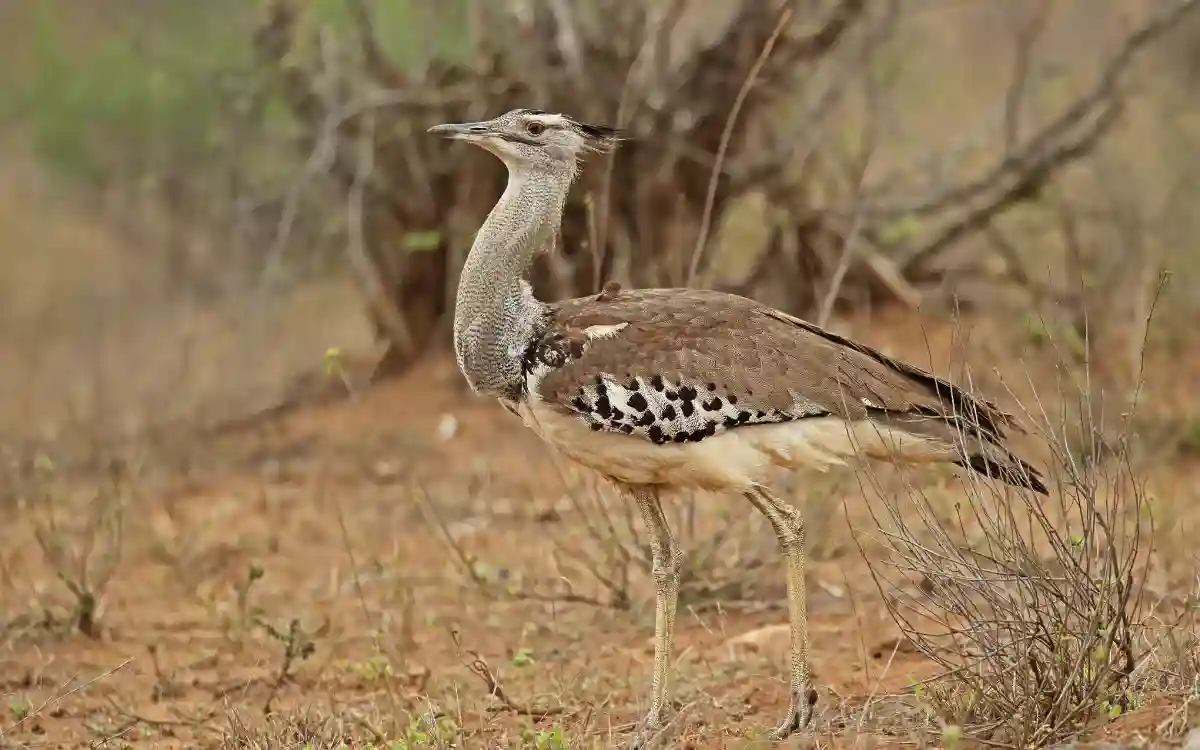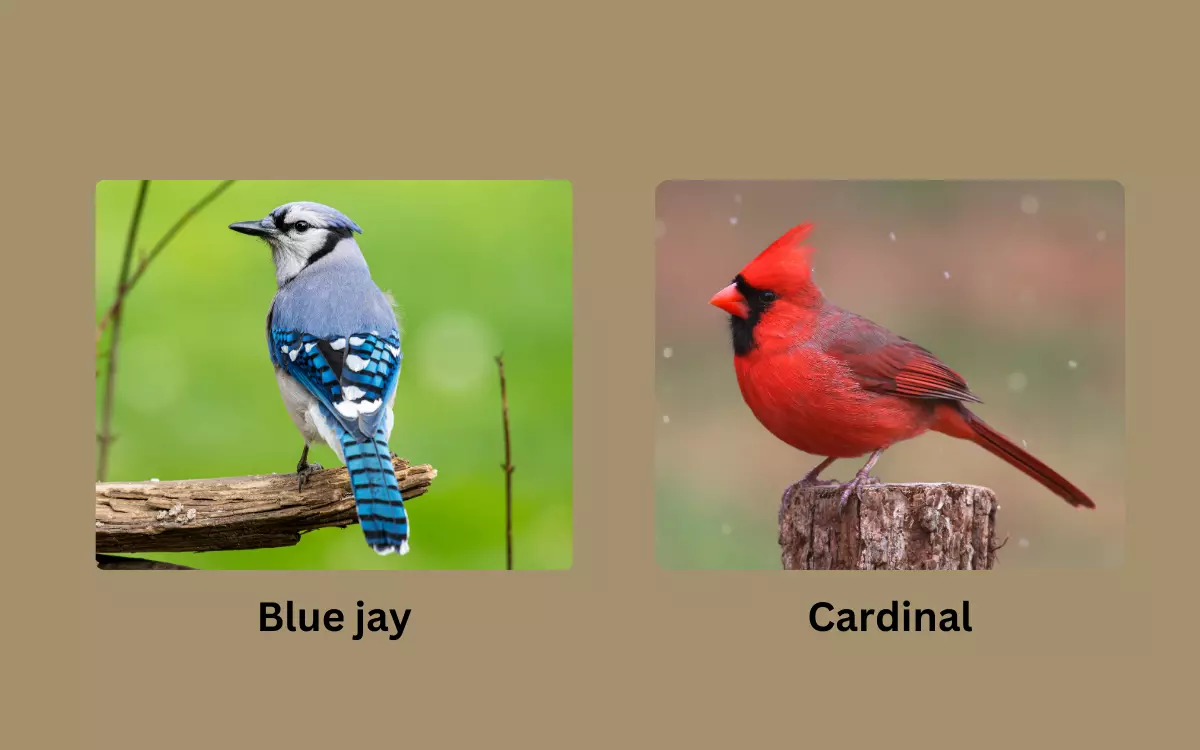Chickadee vs Nuthatch:Side-by-Side Comparison
A quick overview explaining why backyard birdwatchers often confuse chickadees with nuthatches. Highlight their similar size and shared habitats but note key behavioral and physical differences that make them easy to tell apart once you know what to look for.
Chickadee vs Nuthatch – Quick Comparison Table
| Feature | Chickadee | Nuthatch |
| Size | 4.5–6 inches | 4–6 inches |
| Color Pattern | Black cap, white cheeks, gray back | Blue-gray back, black cap/crown |
| Bill Shape | Small, short, pointed | Longer, slightly upturned |
| Movement | Hops and flits | Climbs head-first down trees |
| Voice/Song | “Chicka-dee-dee” call | Nasal “yank-yank” |
| Nesting Location | Tree cavities | Tree cavities |
| Common Species (U.S.) | Black-capped, Carolina | White-breasted, Red-breasted |
Meet the Chickadees

Call:-
Chickadees are small, round-bodied birds known for their bold personalities and signature “chicka-dee-dee-dee” call, which is how they got their name. The most commonly seen species in North America are the Black-capped Chickadee and the Carolina Chickadee. These birds have a black cap and bib, white cheeks, gray backs, and soft buffy sides, giving them a crisp, clean look that’s easy to recognize once you’re familiar with it.
What makes chickadees especially fun to watch is their curious and energetic behavior. They’re often the first to show up at backyard feeders, zipping in and out to grab sunflower seeds or bits of suet. Chickadees are also excellent food storers they tuck seeds into bark crevices or hidden spots and can remember their hiding places for weeks.
In colder months, chickadees join mixed-species flocks and keep up constant chatter to stay in touch with one another. Their vocalizations aren’t just noise the number of “dee” notes in their call actually signals the level of threat they perceive from predators nearby. These clever birds thrive in forests, parks, and neighborhoods alike, bringing life and sound to nearly any wooded space.
Meet the Nuthatches

Call:-
Nuthatches are compact, active birds best known for their habit of creeping headfirst down tree trunks a movement almost no other bird attempts. The two most familiar species in North America are the White-breasted Nuthatch and the Red-breasted Nuthatch. Both have a sleek, blue-gray back, a short tail, and a slightly longer, pointed bill that they use like a tiny pickaxe to pry insects from bark or hammer seeds into crevices.
Unlike the rounder chickadees, nuthatches have a more horizontal stance and appear leaner. Their black crown (in White-breasted) or eye stripe (in Red-breasted) gives them a sharp, alert expression. While chickadees flit from branch to branch, nuthatches are more methodical, often zigzagging along tree trunks and branches in search of food.
Their calls are just as distinctive often a loud, nasal “yank-yank” that carries through the woods. Though they’re a bit more cautious at feeders, nuthatches will happily snack on suet, sunflower seeds, peanuts, and even insects. They also store food, wedging seeds into bark and tapping them in with their bills. With their unusual movement, strong voices, and clever feeding tricks, nuthatches add a lot of character to any backyard birding scene.
Key Differences Between Chickadees and Nuthatches
Posture and Movement
One of the easiest ways to tell these birds apart is by how they move. Chickadees tend to hop and flutter through branches in a horizontal motion. They’re agile and quick, bouncing from twig to twig with playful energy. Nuthatches, in contrast, are most often seen clinging to tree trunks and large limbs. What’s truly unique is their ability to move downward—they often scale trees headfirst, using their strong toes and claws for grip. It’s a behavior that sets them apart from almost all other songbirds.
Voice
Chickadees have a soft, whistled, and melodic call that sounds like “chicka-dee-dee,” which also serves as their namesake. Their vocal range can vary depending on the situation—especially when warning of nearby threats. Nuthatches, on the other hand, have a louder and more nasal call. It often sounds like a repeated “yank-yank,” giving them a distinctive woodland voice that cuts through the trees, especially in colder months.
Bill and Feeding Style
Chickadees have small, fine-tipped bills that are great for picking up seeds or small insects. They’re quick to grab a bite and fly off to eat in safety. Nuthatches have longer, sturdier bills that they use more like tools. They’ll hammer seeds into bark crevices or pry them open with ease—earning their name from their habit of “nutching” or cracking open nuts. Their feeding is more deliberate and methodical compared to the chickadee’s grab-and-go approach.
Where You’ll See Them
Both chickadees and nuthatches are common sights at backyard feeders, especially in wooded or semi-wooded areas across North America. Chickadees prefer areas with dense shrubs, small trees, and thickets, where they can dart in and out for cover. You’ll often spot them perched on the outer branches, scanning for food or interacting with their flock.
Nuthatches, by contrast, stick closer to tree trunks and larger limbs. You’re more likely to notice them clinging to the bark, moving in unique up-and-down patterns while searching for hidden insects or stashed seeds. While chickadees may visit your feeder in quick bursts, nuthatches tend to approach cautiously, often grabbing a treat and disappearing to a nearby tree to enjoy it in peace.
Both birds thrive in parks, forests, and suburban neighborhoods with mature trees. And when winter rolls around, don’t be surprised to see them in the same flock—each bird bringing its own distinct behavior and charm to your backyard birdwatching.
Fun Facts to Remember
Chickadees and nuthatches may be small, but they each have some impressive tricks up their feathers. Chickadees are memory masters—they can remember hundreds of locations where they’ve hidden food, even weeks later. This clever caching behavior helps them survive cold winters when food is scarce.
Nuthatches, on the other hand, are known for their tree-climbing skills and creative nesting habits. Some species, like the Red-breasted Nuthatch, will smear sticky tree resin around the entrance of their nest cavity. It’s thought to deter predators and unwanted visitors. They’re also excellent at wedging seeds into bark and hammering them open with their strong, chisel-like bills.
Both birds are cavity nesters and will gladly move into nest boxes if natural tree holes aren’t available. Their adaptability and bold personalities make them favorites among backyard birders and nature lovers alike.
Commonly Confused Species
Carolina Chickadee vs Black-capped Chickadee
These two chickadees look almost identical, and their ranges even overlap in parts of the U.S., especially in the Midwest. The Black-capped Chickadee is slightly larger with a more distinct white edging on its wing feathers. The Carolina Chickadee has a quicker, higher-pitched call and slightly less contrasting coloration. In regions where their ranges meet, hybrid individuals can make identification even trickier.
White-breasted Nuthatch vs Red-breasted Nuthatch
While both species share the classic head-first climbing behavior, their appearance and voice set them apart. The White-breasted Nuthatch is larger with a clean white face and underparts, and a bold black cap. The Red-breasted Nuthatch is smaller, sports a rusty-orange underside, and has a bold black eye stripe. Their calls are also different—Red-breasted Nuthatches have a higher-pitched, more rapid “yank-yank,” while White-breasted ones sound slower and deeper.
Knowing these subtle differences can help you sharpen your birdwatching skills and enjoy identifying not just chickadees and nuthatches, but the many variations within each group.
Read also: 6 Birds Similar to Chickadees (Photo & info)
FAQs
Is a nuthatch the same as a chickadee?
No, they are two different species from separate bird families. Chickadees belong to the tit family (Paridae), while nuthatches are part of the Sittidae family. They may share habitats and even visit the same feeders, but their behavior, calls, and anatomy differ.
What bird is similar to a chickadee?
Nuthatches are the most commonly confused bird due to their size and shared environment. Other similar birds include titmice (like the Tufted Titmouse), which also have a small, round body and frequent feeders.
Why are they called chickadees?
Their name comes from their signature “chicka-dee-dee-dee” call. The number of “dees” can change depending on how alarmed the bird feels, making their call both a name and a warning system.
Is a nuthatch the same as a chickadee?
Addresses the taxonomic and behavioral differences between the two.
What bird is similar to a chickadee?
Covers similar-looking or commonly confused species like titmice and nuthatches.
Why are they called chickadees?
Explains the origin of the name based on their distinctive vocalization.
Do chickadees and nuthatches get along?
Discusses flocking behavior and winter associations.
Can both birds be attracted to backyard feeders?
Offers feeder tips and food preferences.
Why do nuthatches walk down trees?
Explains their foraging strategy and unique movement.
Which bird is more vocal?
Compares their call volume, variety, and function.
Are chickadees and nuthatches related?
Clarifies family classification and evolutionary differences.






